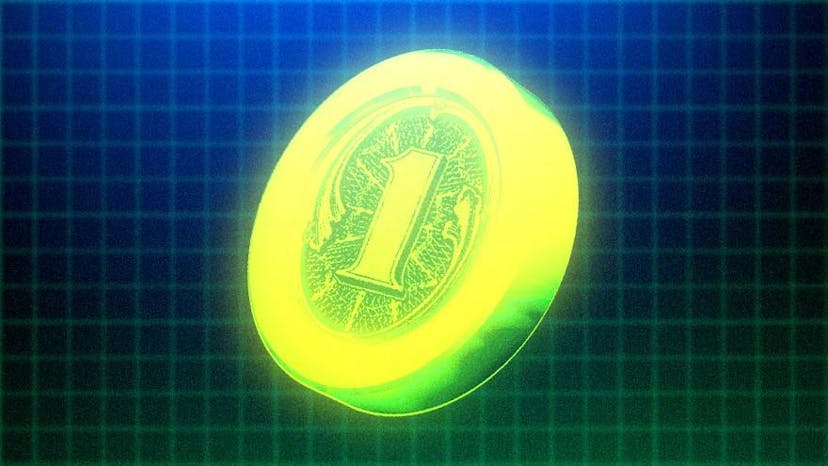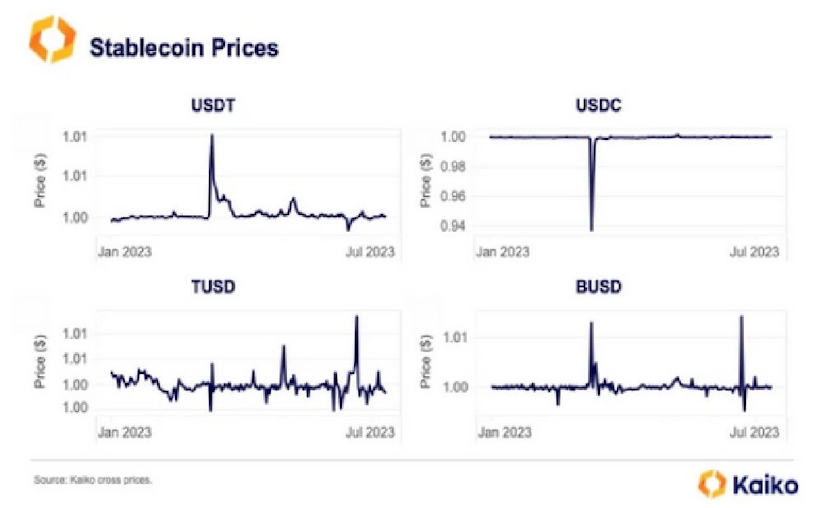DEXs Account For 5% Of Global Stablecoin Trading: Kaiko
Stablecoins make up three-quarters of trade volume on centralized exchanges
By: Samuel Haig • Loading...
DeFi
Decentralized exchanges account for just 5% of global stablecoin trading, despite the figure spiking to 45% in March amid drama in the U.S. banking sector.
According to Kaiko, a cryptocurrency data provider, stablecoin trading makes up 74% of total activity on centralized exchanges. Tether (USDT), the top centralized stablecoin with an $83.4B market cap, accounts for 70% of stablecoin trades.
Kaiko said the stablecoin market share commanded by CEXes is up 10% from the start of the year, at the expense of decentralized platforms. The figure briefly tagged an all-time high of 87% in March after Binance launched a zero-fee promotion to bootstrap liquidity for TUSD.
Despite recent growth from USDC and TUSD, Kaiko’s data shows that Tether continues to dominate the stablecoin sector. USDT accounts for two-thirds of the more than $3T worth of stablecoin trades settled this year.
Kaiko’s data focuses on the top five stablecoins by capitalization, USDT, USDC, BUSD, TUSD, and DAI. The tokens drove between $10B and $15B in average daily trade volume during 2023 so far.
Top Stablecoins Depeg In 2023
Kaiko described the volatility experienced by stablecoins this year as “concerning,” noting that each of the top five tokens lost their pegs during 2023.

USDC and DAI briefly crashed below $0.90 in March, with traders fearing the insolvencies of Silicon Valley Bank and Silvergate Bank could USDC’s reserves. While DAI is an overcollateralized decentralized stablecoin minted by MakerDAO users, 40% of the DAI’s collateral comprised USDC at the time, prompting many DAI holders to offload the token.
USDT tumbled half a cent in June, one day before media reported on documents detailing Tether’s financials after it settled a lawsuit with the New York Attorney General in 2021. Tether attributed the occurrence to market manipulation.
TUSD also suffered a slight depeg in June after traders shorted the token in response to Prime Trust, a crypto exchange and partner to TUSD’s issuer, halted deposits and withdrawals. Despite the incident, TUSD’s market share grew from less than 1% to 19% amid the decline of BUSD.
BUSD has produced both upward and downward volatility in recent months. The volatility comes amid thinning BUSD liquidity after Paxos, the token’s issuer, was ordered to stop minting BUSD by New York regulators in February. BUSD’s market share is now 6%, down from a year-to-date high of 30%.
“While each stablecoin wavered for unique reasons, the volatility highlights a bigger problem: crypto markets are highly dependent on centralized stablecoins that often lack transparency around reserves,” Kaiko said.
DeFi-Native Stablecoins
Kaiko’s report comes amid the emergence of protocol-native stablecoins from top DeFi teams Curve and Aave While Aave governance approved the mainnet launch of its GHO stablecoin today, Curve launched crvUSD in May.
Both protocols allow users to mint stablecoins against deposited collateral assets in exchange for low ongoing fees, meaning users can continue earning DeFi yields while accessing fiat-denominated liquidity.
CrvUSD has since surged in adoption to rank as the sixth-most traded stablecoin, according to CoinGecko. CrvUSD pioneered a soft liquidation mechanism that converts a user’s collateral into stablecoins when approaching liquidation, however, users typically suffer slippage when undergoing soft liquidation.
However, with centralized stablecoins comprising a 12-figure market cap, it remains to be seen whether decentralized stables can take meaningful market share from their centralized counterparts.
Advertisement
Get the best of The Defiant directly in your inbox 💌
Know what matters in Web3 with The Defiant Daily newsletter, every weekday
90k+ investors informed every day. Unsubscribe anytime.